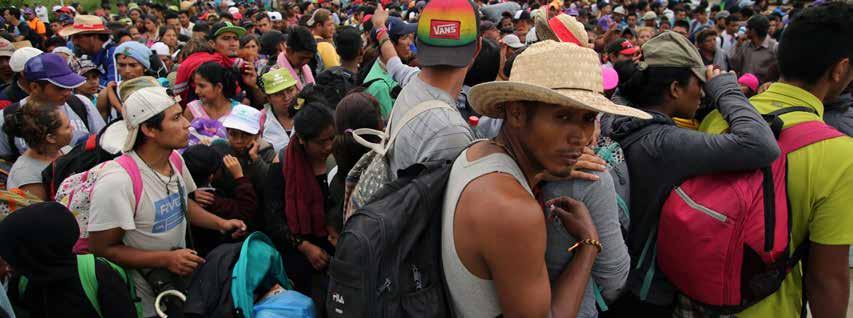
2 minute read
Maternal Health Initiative
3 21things to watch: MATERNAL HEALTH
1
Shutterstock.com/ Sam Wordley
COVID-19: Devastating Effects on Work
Women’s work is critical to COVID-19 response. Women make up 70 to 80 percent of the global frontline health workers. They perform 75 percent of the world’s unpaid care work, which is in growing demand due to school closures and the increased needs of sick and elderly family members. Yet as women struggle to meet the demands of both their personal and professional lives, the pandemic is creating a dangerous dichotomy: women’s unpaid work is skyrocketing, yet their paid work is plummeting. In September 2020, 865,000 women left the U.S. workforce—four times the number of men—and reduced the proportion of women in the nation’s labor pool to its lowest level since 1988. This setback to gender equity will be felt for years to come. To reverse it, pandemic responses must recognize women both as active decision-makers and as a distinct population severely impacted by the crisis.
Featured Experts:
Sarah Barnes, Project Director, Maternal Health Initiative http://www.wilsoncenter.org/maternalhealth MHI@wilsoncenter.org Facebook.com/ecspwwc @Wilson_MHI 202.691.4292
years
2
Shutterstock.com/Alex Gakos

Humanitarian Settings and Vulnerable Populations
Each day, 810 women around the globe die from pregnancy or childbirth-related causes. Vulnerable populations, including Indigenous women and girls, as well as those affected by conflict and crisis, face a heightening threats of maternal mortality and morbidity. Indigenous women are at least twice as likely to die during pregnancy, delivery, or postpartum than their white counterparts. Poor maternal health and birth outcomes for Indigenous women and girls also are linked to barriers created by discrimination, exclusion, poverty, and distance. Sixty percent of maternal deaths occur in conflict, displacement, or natural disaster zones. In 2018, 136 million people needed humanitarian aid, including 34 million women and girls of reproductive age. And 5 million of them were pregnant. Family planning needs do not disappear during a crisis. Yet women and girls are disproportionately affected by gender-based violence, exploitation, rape, and dangerous birth conditions in times of crisis and conflict.
3
Shutterstock.com/Pordee_Aomboon

COVID-19: Gender Inequities and Gender Roles
COVID-19 has defined 2020. It also has magnified global gender differences and inequities. Since March, men have accounted for a majority of deaths due to the virus compared to women. While some biological factors contribute, another factor is the societal expectation that men conform to traditional ideas of masculinity. This leads men to smoke and consume high levels of alcohol at a greater prevalence than women, and thus exacerbates health conditions that make men more susceptible to severe COVID-19 infection. Yet if one looks beyond mortality rates, the pandemic has had an outsized impact on women and girls. Women make up the vast majority of all frontline health workers. They also are also disproportionately impacted by increased rates of gender-based violence, lack of access to sexual and reproductive healthcare (SRH), and issues related to economic and food insecurity.










